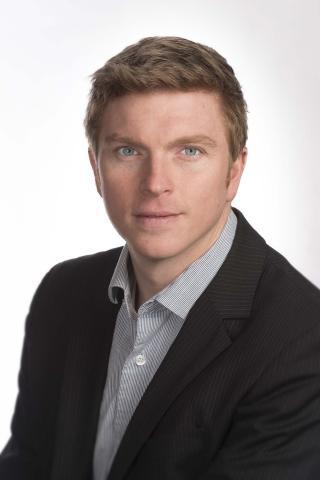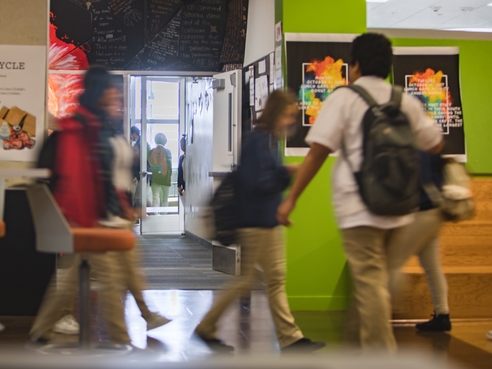Why Schools Need to Change
Investing in the Explosion of Options in Education & Learning
Topics

Today’s learners face an uncertain present and a rapidly changing future that demand far different skills and knowledge than were needed in the 20th century. We also know so much more about enabling deep, powerful learning than we ever did before. Our collective future depends on how well young people prepare for the challenges and opportunities of 21st-century life.
A legacy mindset in education is that there needs to be only one or at most a few limited options. It’s a monoculture, and it’s one that needs to end.
Time and again, as local institutions transform into dynamic, international markets there is an explosion in variety and a relentless pursuit of more aptly and fully meeting the scales and diversity of demand.
As products and services are uprooted from monopolistic, local distribution models to more frictionless delivery platforms, the spoils go to organizations that can consistently produce in response to consumer preferences and customer experience; and we all are rewarded with a dizzying array of choice. The explosion of options, then, and commercial processes for increasingly meeting the diversity of demand is a central theme of investing in education and learning.
To see some analog, let’s look to food and media.
A Look at Food:
For eons our ancestors had few options when they were hungry. People likely ate some kind of gruel or porridge every day. If they were lucky enough to be gatherer-hunters in a food-rich ecosystem, they got to eat local fruit, nut, berries, and game. Still, their culinary options were pretty limited. For much of recorded history, the most universal flavor enhancements were restricted to salt and pepper. And they could hardly know any better. It was a world of unblissful ignorance.
But after the Columbian exchange things got interesting. The potato, the tomato, chile peppers, and so many other crops entered diets around the world. Trade in spices and seeds suddenly awoke the innovations that eventually became our international cuisines.
Today, I can walk ten minutes to downtown in my tiny town on the San Francisco Peninsula and eat food from around the world, in any different flavor profile, in any size or for any type of diet.
A Look at Media:
After the television emerged, for a little while there were three channels. If you wanted to watch television, you watched Leave It To Beaver, Edward R. Murrow, and the Lone Ranger. After cable, there were a hundred channels to choose from. There have been shows about bored housewives, cartoons about animals that do kung fu, and documentaries on WWII on an endless loop. Now that the Internet is here, there are such an infinite variety of video and audio entertainment and media, more is created every hour than you could go through in a lifetime.
And Then There’s School:
And then there’s school. Since at least the time of the Greeks, if you wanted an education you had to go to a school. In different contexts it has been called a Gymnasium, Academy, College, and University, but the format is nearly always the same. And with the advent of state-provided school, there was really only one variety—that of the Prussian-born, American-massified type. Teachers were largely professional instructors, and were recruited for knowledge of an unvarying core-subject and their willingness to recite it through lectures over and over, year after year.
And with the movement towards tertiary massification and College Access, there was really only one variety of Higher Education as well—that of the Italian-born, English-modified, Harvard-mastered, Morill-Act-profligated, California-organized type. Departments recruit faculty on their reputation amongst peers in their field, using publishing and prevalence of citations as a proxy, and their research is subsidized by the mandated course-load. They worked with departments to define courses and revised them only every once in a while as needed by their accreditor.
With few exceptions, our options for learning have been more or less local (or at least restricted by location) and relegated to the format of semi-able human reciting information through lecture and a set of readings. But we’re no longer limited to that.
Everyone is saying they’re hungry for education, and right now they’re lining up en masse to get the same slop of gruel that everyone else gets. And as far as I can tell, very few people are fully delighted or satiated.
The Possibility Landscape Expands:
So at Learn Capital, one of our central investment tenets in the Education and Learning space is the inevitable explosion of options. The good news, from our perspective, is there’s no better way to achieve this than through encouraging and backing the structural creativity of entrepreneurship.
A legacy mindset in education is that there needs to be only one or at most a few limited options. It’s a monoculture, and it’s one that needs to end and is ending. For the past several decades, there’s one high school you could go to, there’s been one version of Algebra. There were only two Spanish teachers, you could choose an elective between Debate and Art.
As we move forward, saying that there’s already a “math curriculum” will be like saying there’s already “a sitcom on prime time.” Or, to extend the food analogy, saying there’s already a “salty starch on your plate.” Saying that there’s an incumbent reading curriculum for middle school will be like saying “we’ve got cheese on bread” or “there’s already a movie about two teenagers falling in love.” Just because it exists, does not mean there’s not an opportunity. As a matter of fact, it’s just proof that there’s constant demand for learning in that subject matter, so quality learning experiences can do well in an existing, well defined market and audience.
As for higher education, the same will apply.
Moreover, there’s also learning that doesn’t look like school, reaching new markets that schools couldn’t serve or didn’t know existed. Software Engineering and Creative Professionals (Design, Photography) now have a wide array of cheap and high-quality options for continuous education. In our portfolio alone, you can learn to code from Bloc or General Assembly, or learn to make more money as a photographer from CreativeLive or Udemy.
The great news for educators, then, is that we are pretty close to moving from a question of whether or not someone has the privilege of learning to how everyone can best learn.




